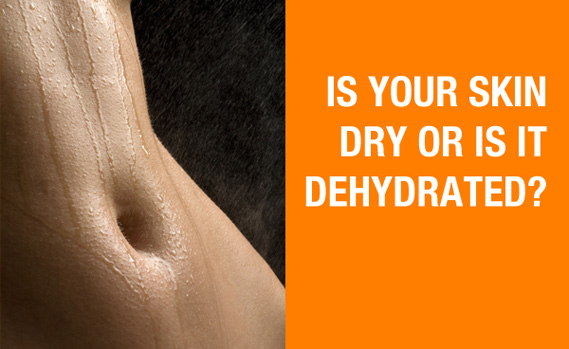
What is the difference between dry and dehydrated skin? You’ve probably heard both terms used before, especially if you’ve had your skin analyzed by a skin care professional. The differences are significant and when it comes to choosing skin care products, it’s important to understand both skin conditions.
What is dry skin?
Dry skin as a skin type is alipidic skin, which means it doesn’t produce sebum or oil. Skin relies on oil to hold moisture into the skin and without it, it can appear rough and flaky and the appearance of wrinkles are more pronounced. Dry skin can also lead to a damaged barrier function, increasing long term sensitivity and inflammation, causing a chain or biochemical reactions that lead to collagen and elastin breakdown.
How can you treat dry skin?
- Dry skin needs moisturizers containing protectants and emollients to provide a protective layer to prevent moisture loss. Choose moisturizers with phospholipids, yeast peptide, lecithin and rose oil.
(See Cellular Protect & Repair Face Cream)
- Use gentle exfoliants (try Gentle Repair Cleanser with bamboo crystals) which gently buff away dead skin to remove surface flakiness and promote cell renewal, as they improve natural production of intercellular lipids for the barrier function.
- Wash with mild cleansing lotions formulated for your skin type and avoid using bar soap or harsh foaming cleansers.
- Use a humidifier in the winter months to keep moisture in the air – and in your skin.
- Never leave the skin bare for more than 60 seconds after washing. Immediately apply alcohol-free toner, serum and moisturizer.
- Use a moisturizing skin serum under moisturizer to provide an additional layer of protection to the skin. (See our collection of serums).
What is dehydrated skin?
Dehydrated skin as a skin condition lacks water content, but may still produce oil. It may be biologically inspired (genetic) or environmental. Dehydrated skin, while it can be flaky, generally feels tight and can form fine lines easily due to the surface cells being “deflated,” lacking water that normally makes the surface smoother. If looked closely through a magnifying glass, dehydrated skin has tiny triangular fine lines. Dehydrated skin is common among those with oily and acne-prone skin who use harsh products that strip the skin of water.
How can you treat dehydrated skin?
- Use moisturizers with humectants like Glycerol, Hyaluronic Acid, Vitamin E, Glucosamine HCL and Propolis (see our PURE TDA treatments) .. These are ingredients that help to attract water from the environment into the skin to keep it soft and supple.
- Never leave the skin bare for more than 60 seconds after washing. Immediately apply alcohol-free toner, serum and moisturizer.
- Go easy on exfoliants and if possible, almost always opt for a “manual dermabrasion”. Using too many acids and scrubs too often and too aggressively can cause surface dehydration and inflammation.
Knowing the difference between dry skin and dehydrated skin is important and treating it for what it needs is important. The best thing you can do for a dry or dehydrated skin is be disciplined. Treat your skin and body to routines that will support it from the inside as well as the outside. Be disciplined with your daily skincare routine. Get into a good habit of cleansing, toning and moisturizing your skin twice a day every day.

Leave A Comment